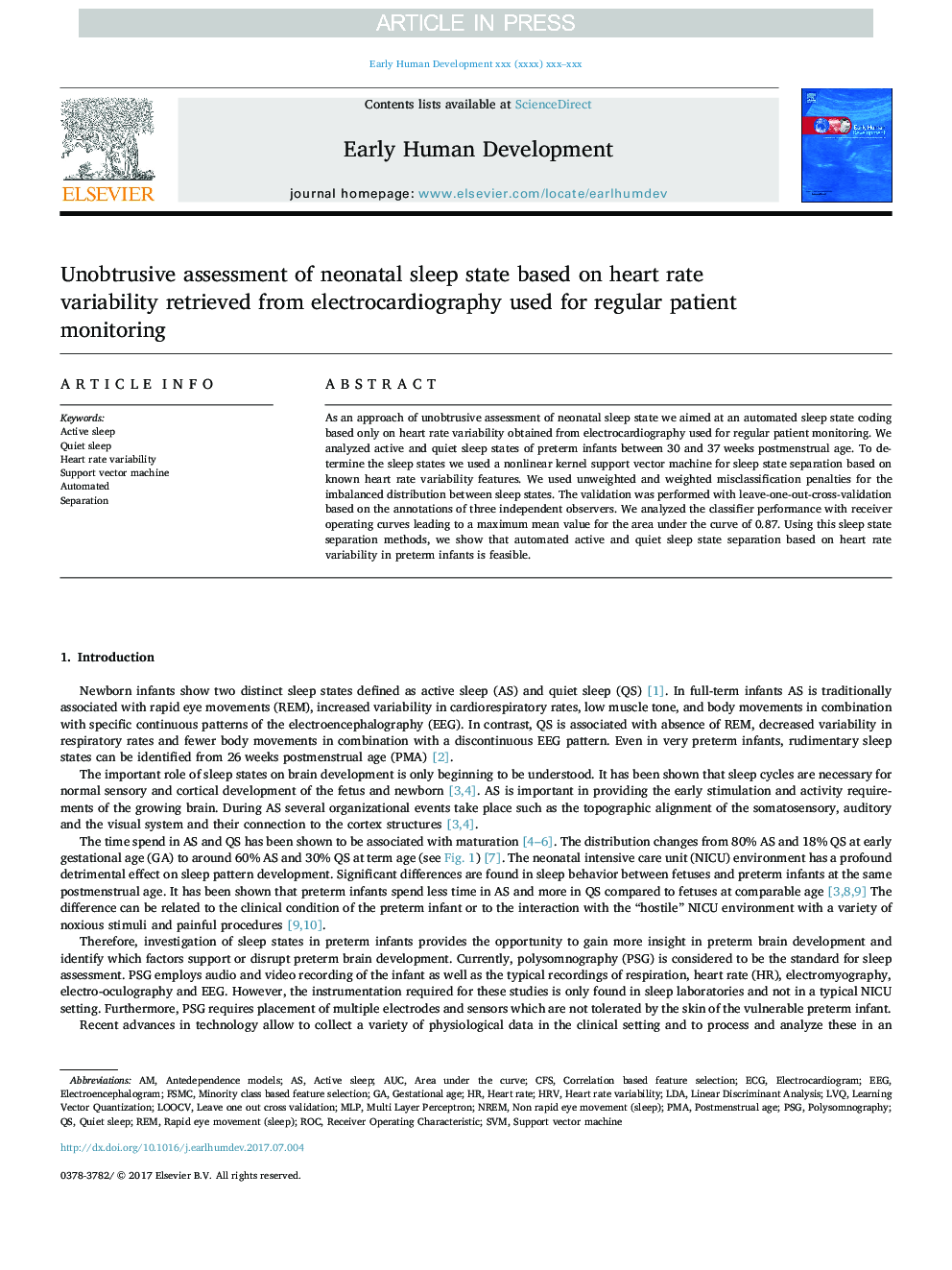| Article ID | Journal | Published Year | Pages | File Type |
|---|---|---|---|---|
| 8777765 | Early Human Development | 2017 | 10 Pages |
Abstract
As an approach of unobtrusive assessment of neonatal sleep state we aimed at an automated sleep state coding based only on heart rate variability obtained from electrocardiography used for regular patient monitoring. We analyzed active and quiet sleep states of preterm infants between 30 and 37Â weeks postmenstrual age. To determine the sleep states we used a nonlinear kernel support vector machine for sleep state separation based on known heart rate variability features. We used unweighted and weighted misclassification penalties for the imbalanced distribution between sleep states. The validation was performed with leave-one-out-cross-validation based on the annotations of three independent observers. We analyzed the classifier performance with receiver operating curves leading to a maximum mean value for the area under the curve of 0.87. Using this sleep state separation methods, we show that automated active and quiet sleep state separation based on heart rate variability in preterm infants is feasible.
Keywords
Related Topics
Health Sciences
Medicine and Dentistry
Obstetrics, Gynecology and Women's Health
Authors
Jan Werth, Xi Long, Elly Zwartkruis-Pelgrim, Hendrik Niemarkt, Wei Chen, Ronald M. Aarts, Peter Andriessen,
